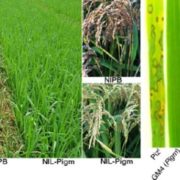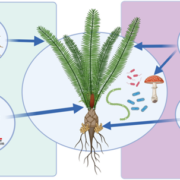Review: Increasing yields of barley and wheat through inflorescence architecture
 The Triticeae is an important tribe of crops that contains both barley and wheat. As the global population increases, the yield of Triticeae crops must increase to meet global food demands. An important factor influencing yield is grain number per spike, which is affected by inflorescence architecture. Here, Zhang et al. suggest that altering the inflorescence architecture in Triticeae crops by increasing the amount of branching and the number of spikelets per inflorescence could lead to higher yields. They highlight many key regulators that could be targeted to achieve this, for instance the AP2-ERF (APETALA2/ETHYLENE RESPONSIVE FACTOR) transcription factor COMPOSITUM 2 in barley which when mutated results in a highly branched spike. Another potential target is the miRNA156-SPL (SQUAMOSA promoter binding protein-like) module; SPL knockout wheat lines have decreased spikelet number, so increasing SPL expression might increase spikelet number. Such regulators could be targeted using CRISPR/Cas9 genome editing or by searching for beneficial alleles in seed stores or wild relatives, leading to increased yields of these important crops. (Summary by Rose McNelly @rose_mcn) J. Exp. Bot. 10.1093/jxb/erad386
The Triticeae is an important tribe of crops that contains both barley and wheat. As the global population increases, the yield of Triticeae crops must increase to meet global food demands. An important factor influencing yield is grain number per spike, which is affected by inflorescence architecture. Here, Zhang et al. suggest that altering the inflorescence architecture in Triticeae crops by increasing the amount of branching and the number of spikelets per inflorescence could lead to higher yields. They highlight many key regulators that could be targeted to achieve this, for instance the AP2-ERF (APETALA2/ETHYLENE RESPONSIVE FACTOR) transcription factor COMPOSITUM 2 in barley which when mutated results in a highly branched spike. Another potential target is the miRNA156-SPL (SQUAMOSA promoter binding protein-like) module; SPL knockout wheat lines have decreased spikelet number, so increasing SPL expression might increase spikelet number. Such regulators could be targeted using CRISPR/Cas9 genome editing or by searching for beneficial alleles in seed stores or wild relatives, leading to increased yields of these important crops. (Summary by Rose McNelly @rose_mcn) J. Exp. Bot. 10.1093/jxb/erad386









